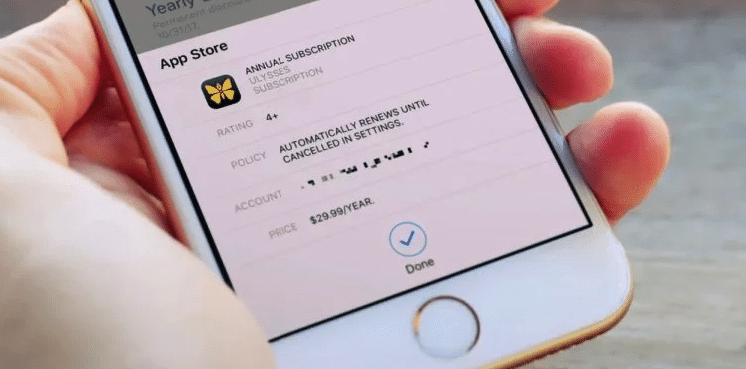Subscription apps have become one of the most controversial phenomena in the App Store over the past few years. At first, they were greeted with joy because it was a great opportunity to try this or that application during the free trial period, and only then decide for yourself whether it is worth it. Previously, this would require buying the app right away and then requesting a refund (which was not always approved). Many realized that if before they could buy the application and forget about it, they now need to renew the subscription every year. As a result, the subscription for the user is often unprofitable. The situation was also complicated by the lack of any control from Apple regarding the cost of subscriptions.
The popularity of subscriptions has led some developers to use them to “cut” as much money from users as possible.
Table of Contents
How app developers trick users
Do you think it absurd? Here’s one of the brightest examples for you – the developers have made a remote control application for Roku consoles; this is one of the most popular App Store requests. Apparently, the reviews were clocked (if you look at the reviews with the text, then the average score of the application is not higher than two), climbed higher in the search results for the query “Roku remote control” started making money. More precisely, everything looks harmless for the user, with 3 days of free use, and only then the money for the subscription is debited. They only charge $ 5 a week using their application. Just a remote control for the set-top box, many such applications are given out for free.
The result of this adventure is in the screenshot below. From January 1, 2020, to February 1, 2021, the expected income of the developers of this application was $ 1.5 million, which is about $ 8 thousand per day. Not bad for remote control.
And while the user comes to his senses, several thousand rubles can already be deducted from his card (at a subscription price of 399 rubles per week). Now imagine how many such users. Judging by the income of the aforementioned application, there are quite a few.
Or here’s another example of making money on users – in this application (a regular QR code scanner, similar to one built into the iPhone camera ), entry is generally provided only after completing a free trial period for 3 days. Needless to say, many people go in, delete the application in a minute, and the subscription does not disappear. As a result, after 3 days, money is debited from the card.
How to cancel a subscription on an iPhone
To avoid falling prey to attackers, we advise you to always check active subscriptions . And unsubscribe immediately after you uninstall the app.
- To unsubscribe from a remote app, go to the App Store;
- Click on the profile icon in the upper right corner;
- Go to the “Manage subscriptions” tab;
- Find the service you want to unsubscribe from and click on it;
- In the window that opens, click on the red button “Unsubscribe” and confirm the action.
How Apple Solves the Problem with Subscriptions
But not immediately (suddenly the deletion was made by mistake), but send a reminder to the user, for example, after 2-3 days. A simple push notification with text like “You have deleted app xxx. Still want to subscribe? ” would save users millions of dollars. And unscrupulous developers were deprived of income.
Not so long ago, Apple really noticed this problem and began to reject applications with costly subscription costs from the App Store. Most of the applications that charge more than $ 1-2 per week fall under suspicion. For example, if an app has an $ 8 per week or even higher subscription, Apple sends the developer an email asking him to explain why the subscription price is high.
On the one hand, this is correct since, as we have seen, there really is a problem with fake subscriptions. On the other hand, the developers quite logically began to be indignant in the style of “as much as I want, I take as much for a subscription, at least $ 999 a week.” Perhaps Apple should not have limited the developers themselves and instead sent reminders to the users themselves about the subscription that is not being used at the moment.
